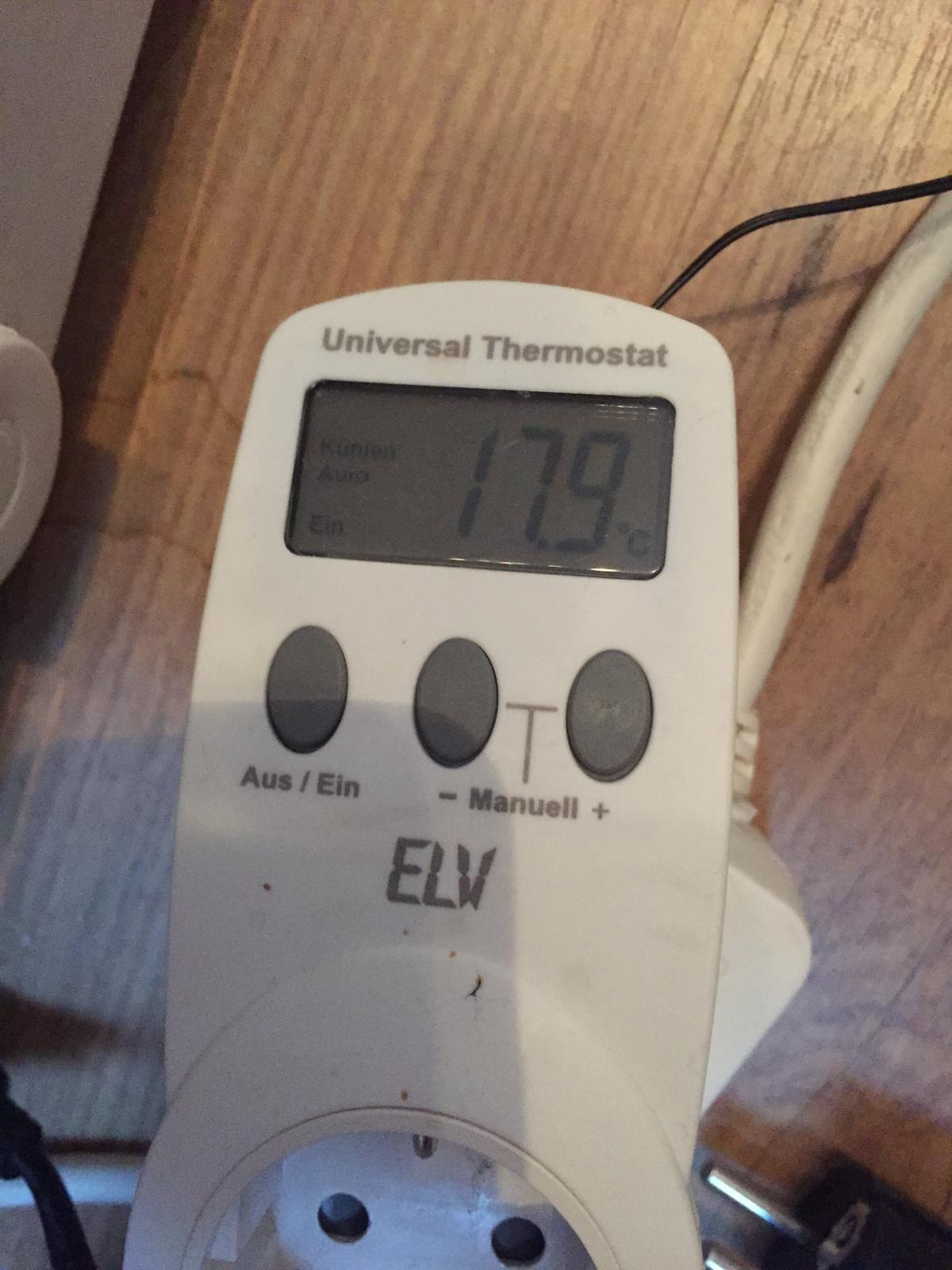I have this crazy yeast that I've talked about a lot. Its original owners ferment their farmhouse beers at around 40C/104F with it. I have a christmas brown ale fermenting with this yeast right now, but I only wanted it to give off a little of its typical characteristics, so I decided to ferment at around 25/77. So I set my temp controller to about 21/70, so that if it dropped below that, the lamp would turn on and heat it up. But I figured that during the vigorous part of fermentation, it would rise up to around 25/77. Boy was I wrong!
So I got this idea, that I should show the new brewers what happens if you don't control the ferment temps, or if the temperature you're attempting to control is the ambient air. Room temperature is 21/70 as I stated, I've had the lid to the chamber open this whole time. The thing is chugging away just over 24 hrs post-pitch at 27/81! And that temp probe for the temp controller isn't even taped onto the bucket. It's just hanging out at the bottom of the chamber in that corner. So the actual beer temps are probably even a degree or two higher than that.
This first picture is a Hard Christmas soda that's finished fermenting and is just "chilling" at room temps to finish up and condition a bit while waiting to be cold crashed. It's just to show what room temps are, in case nobody believed me.
The second pic is the bucket in the chamber, and the temp controller.


So I got this idea, that I should show the new brewers what happens if you don't control the ferment temps, or if the temperature you're attempting to control is the ambient air. Room temperature is 21/70 as I stated, I've had the lid to the chamber open this whole time. The thing is chugging away just over 24 hrs post-pitch at 27/81! And that temp probe for the temp controller isn't even taped onto the bucket. It's just hanging out at the bottom of the chamber in that corner. So the actual beer temps are probably even a degree or two higher than that.
This first picture is a Hard Christmas soda that's finished fermenting and is just "chilling" at room temps to finish up and condition a bit while waiting to be cold crashed. It's just to show what room temps are, in case nobody believed me.
The second pic is the bucket in the chamber, and the temp controller.







